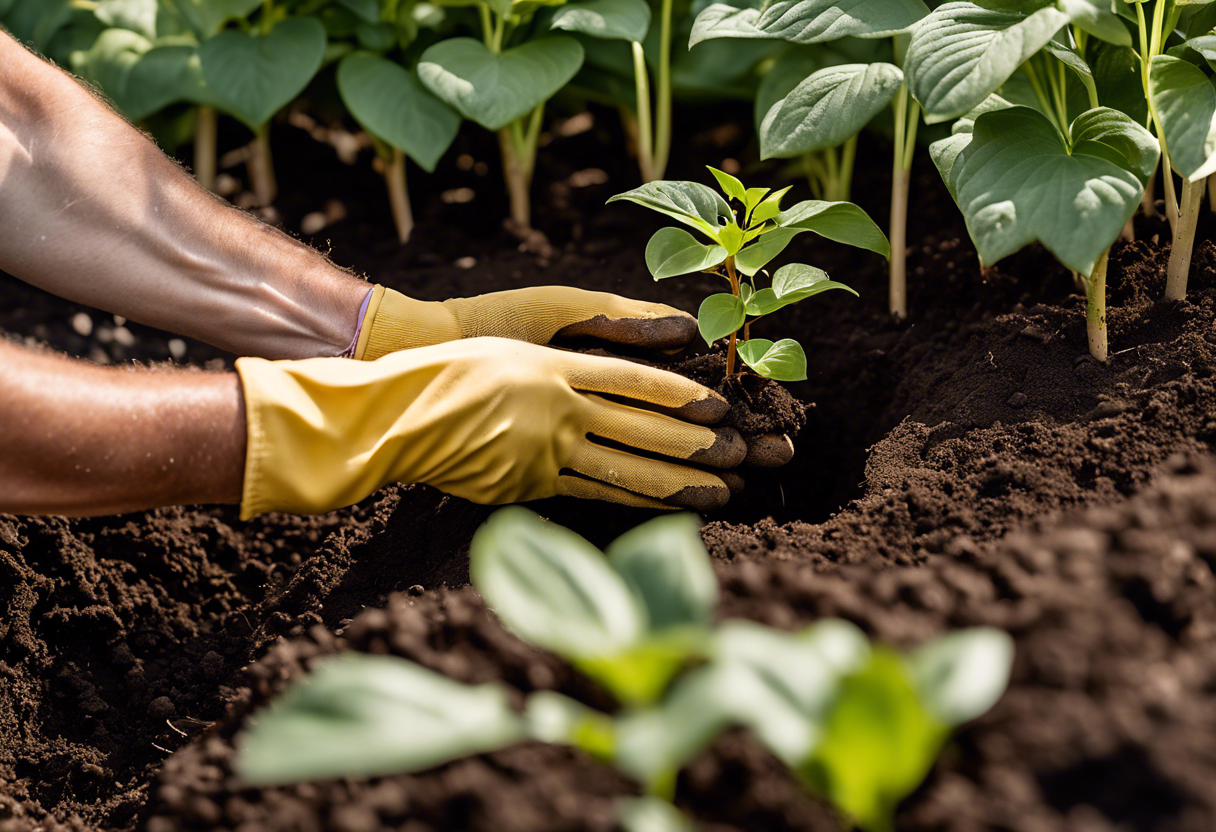Well, hello there, green thumbs and plant enthusiasts! Have you ever considered Growing Cornus alba ‘Bailhalo’ (Siberian Dogwood) in your garden? If not, let me tell you, it’s an absolute show-stopper.
This dazzling shrub with its stunning winter bark will give your garden a pop of color even in the dreariest months. So buckle up, my friends. It’s time to dive into the world of Siberian Dogwood – a bit chilly but totally worth it! Keep reading about Guide to Growing Cornus alba ‘Bailhalo’ (Siberian Dogwood).
Key Takeaways
- Cornus alba ‘Bailhalo’ (Siberian Dogwood) thrives in USDA zones 2-7.
- It prefers full sun to partial shade and well-drained soil.
- Regular watering is essential, especially during dry spells.
- Prune in late winter or early spring for the best variegated foliage and red stems.
- Propagation can be done through hardwood cuttings in winter.
- Watch out for common pests like dogwood sawfly and diseases like leaf spot.

What is Cornus alba ‘Bailhalo’ (Siberian Dogwood)?
Well, let me tell you, Cornus alba ‘Bailhalo’, also known as the Siberian Dogwood plant, is a real showstopper in the garden. This popular garden plant has a reputation for being easy to grow and stunningly beautiful. But hold your horses! We’re going to dive deeper into its origin, description, key features, and benefits of gardening with Siberian Dogwood.
Origin and Description
The origin of Siberian Dogwood traces back to chilly Siberia. It’s a hardy soul that can withstand harsh winters. Now imagine this: A shrub with vibrant red stems in winter and variegated leaves in summer. That’s your Cornus alba ‘Bailhalo’ right there! Its physical characteristics are quite striking, making it an eye-catching addition to any landscape.
Key Features and Benefits
What makes this plant unique? Well, besides its fiery red stems and variegated leaves, it’s incredibly resilient. The key features of Siberian Dogwood include its ability to thrive in various soil types and resist common pests. Plus, it provides year-round interest in gardens – now that’s what I call a win-win! So if you’re thinking about growing Cornus alba ‘Bailhalo’, remember the many advantages it brings to your green space.
How to Plant Cornus alba ‘Bailhalo’?

Let’s dive into the nitty-gritty of growing Cornus alba ‘Bailhalo’. It’s not rocket science, but there are a few things you need to know.
Choosing the Right Location
First off, let’s talk about location. The ideal location for Siberian Dogwood is somewhere that gets a fair amount of sunlight. These plants love their vitamin D! But don’t worry, they’re not sun-worshippers; some shade won’t hurt them.
Next up, space. You can’t squeeze these beauties into a tiny corner and expect them to thrive. They need room to spread their branches and show off their stunning white bark. So, make sure you’ve got enough space for your Siberian Dogwood before you start digging.
Soil Preparation
Now onto soil preparation. Preparing soil for Siberian Dogwood isn’t too tricky, but it does require some attention to detail. First up: pH level. These plants prefer slightly acidic to neutral soil, so aim for a pH between 6 and 7.
Nutrient-wise, they’re not too picky but do appreciate a well-fed soil. A good compost or organic matter will usually do the trick here.
Finally, texture: these plants like well-drained soil so avoid heavy clay if possible. If your garden is more clay than loam, consider adding some sand or grit to improve drainage.
Planting Process
Alrighty then! Let’s get down to business with the actual planting process of our lovely Cornus alba ‘Bailhalo’. Start by digging a hole that’s twice as wide and just as deep as the root ball of your plant.
Place your plant in the hole and backfill with soil until it’s firm but not compacted. Water your plant thoroughly after planting to help it settle in.
And there you have it, folks! Your Siberian Dogwood planting guide in a nutshell. Remember, patience is key when growing Cornus alba ‘Bailhalo’. These plants may take some time to establish, but once they do, they’re a sight for sore eyes!

How to Care for Cornus alba ‘Bailhalo’?
When it comes to growing Cornus alba ‘Bailhalo’ (Siberian Dogwood), there are a few key things to keep in mind. This includes watering, fertilizing, and pruning. Let’s dive into the details of each.
Watering Requirements
The watering frequency for Siberian Dogwood can vary based on factors like climate and soil type. In general, you want to maintain consistent moisture levels in your Cornus alba ‘Bailhalo’. Over-watering or under-watering can lead to problems.
In hot climates or during dry spells, you may need to water more frequently. On the other hand, if you’re dealing with heavy clay soil that retains water well, less frequent watering might be necessary. It’s all about finding that sweet spot where your Siberian Dogwood is neither thirsty nor drowning.
Fertilizer Application
Next up is fertilizing your Siberian Dogwood. The best fertilizer for Cornus alba ‘Bailhalo’ tends to be a balanced one. You know, the kind that has equal amounts of nitrogen, phosphorus, and potassium.
Apply it in early spring before new growth starts. This gives your plant a nutrient boost right when it needs it most. Remember not to overdo it though! Too much fertilizer can do more harm than good.
Pruning Techniques
Lastly, let’s talk about pruning your Siberian Dogwood. The best time for this is late winter or early spring before new growth begins.
Pruning helps promote healthy growth by removing dead or diseased branches. It also allows light and air to reach the inner parts of the plant better. Just make sure you’re using sharp pruning tools for a clean cut and less stress on the plant.
And there you have it! A quick rundown on the basics of Siberian Dogwood care. Remember, every plant is unique and might need a bit of tweaking here and there. But with these tips in mind, you’re well on your way to becoming a Cornus alba ‘Bailhalo’ pro!
Common Problems with Cornus alba ‘Bailhalo’ and Their Solutions
When it comes to growing Cornus alba ‘Bailhalo’ (Siberian Dogwood), you might face a few hurdles. But don’t worry! We’re here to help you tackle these Siberian Dogwood problems head-on.
Pest Issues
First off, let’s talk about pests. These little critters can be a real pain in the bark for your Siberian Dogwood. You might encounter aphids, scale insects, or borers munching on your precious plant. But fear not! There are plenty of ways to manage these pests affecting Siberian Dogwood.
For starters, consider using insecticidal soaps or neem oil. These can be quite effective at keeping those pesky bugs at bay. And remember, sometimes the best form of pest control for Cornus alba is simply keeping your plant healthy and stress-free!
Disease Concerns
Next up: diseases. Fungal infections like powdery mildew and leaf spot can pose a threat to your Cornus alba ‘Bailhalo’. But again, there’s no need to panic! With the right preventative measures and treatment options, you can keep your plant disease-free.
Regularly inspecting your plant for early signs of disease is key. If you notice any suspicious spots or discoloration, act fast! Applying fungicides can help treat these diseases in Siberian Dogwood before they spread further.
Environmental Challenges
Finally, let’s discuss environmental challenges. Factors like sunlight exposure and soil type can greatly impact the growth of your Siberian Dogwood. Too much sun can scorch its leaves while poor-draining soil can lead to root rot.
To overcome these environmental factors for Siberian Dogwood, ensure it gets partial to full sun and plant it in well-draining soil. If your soil is heavy clay, consider amending it with organic matter to improve its structure and drainage. Remember, adapting Bailhalo to environment is key for a healthy, thriving plant!
Propagation of Cornus alba ‘Bailhalo’
When it comes to Siberian Dogwood propagation, there are two main methods you can use. These are seed propagation and cuttings propagation. Both methods have their own unique processes, but don’t worry, we’re not going into the nitty-gritty details here. We’re just giving you a general idea of how Cornus alba ‘Bailhalo’ reproduction works.
Seed Propagation
Seed propagation is one way to go about growing Siberian Dogwood from seeds. First things first, you need to prepare your seeds. This usually involves soaking them in water for a day or two to soften the outer shell.
Once that’s done, it’s time for planting. You’ll want to plant your Cornus alba ‘Bailhalo’ seeds in a well-draining soil mix and keep them moist but not soggy.
Now comes the waiting game – germination! It might take a few weeks or even months for your seeds to sprout, so patience is key in this stage of Siberian Dogwood seed cultivation.
Cuttings Propagation
If waiting isn’t really your thing, then propagating Cornus alba ‘Bailhalo’ from cuttings might be more up your alley. This method involves taking cuttings from an existing plant and encouraging them to grow roots.
The best time for taking Siberian Dogwood cuttings is during the late spring or early summer when the plant is actively growing. Make sure to choose healthy branches and make clean cuts.
Next step? Rooting those cuttings! Place them in a container with some rooting hormone and moist soil mix. Keep them in a warm place with plenty of indirect light until roots start forming.
And voila! You’re on your way to successfully propagating Cornus alba ‘Bailhalo’ from cuttings. Remember, encouraging root growth in Cornus alba ‘Bailhalo’ is crucial, so don’t forget to water them regularly and give them lots of love!

To Wrap Up
Growing Cornus alba ‘Bailhalo’ (Siberian Dogwood) is like nurturing a shy but talented artist. With the right care, this plant will reward you with an explosion of color that outshines even the most flamboyant peacock!
Don’t be a couch potato; get out there and start growing your own Siberian Dogwood today! For more details, check Growing Cornus alba ‘Bailhalo’ (Siberian Dogwood). Happy gardening!


